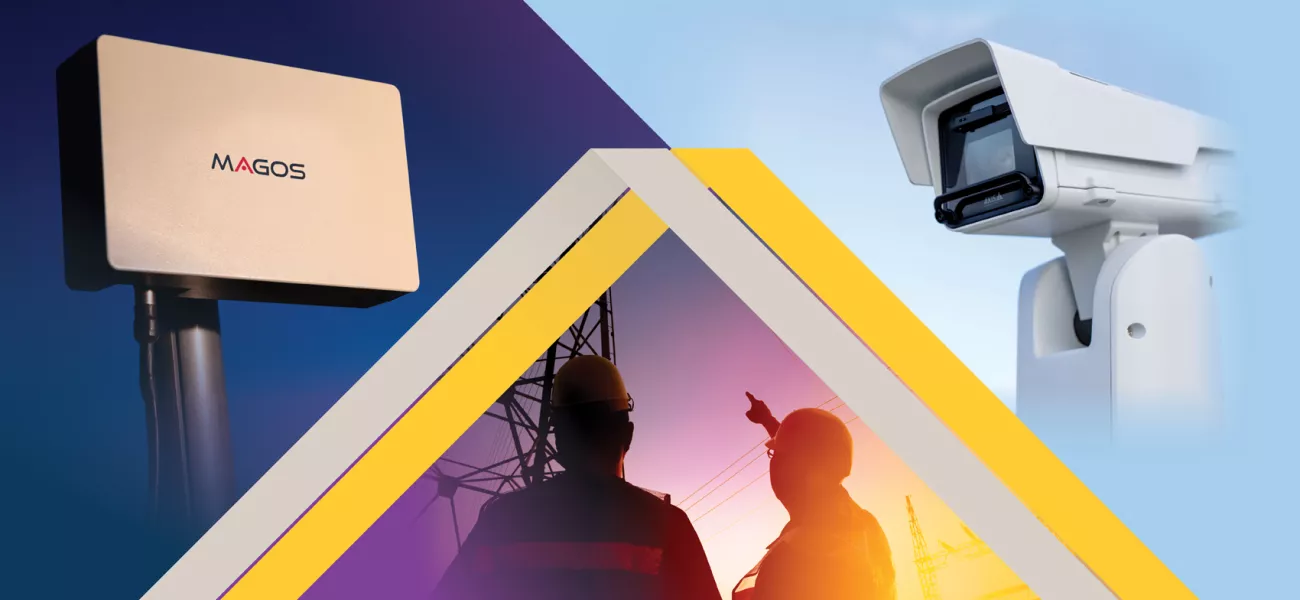
The ability to maintain operational uptime can make the difference between a satisfied customer base or disruptions in service that can put employees, reputations, and the bottom line at risk.
“Neither snow, nor rain, nor heat, nor gloom of night,” to borrow a phrase from the United States Postal Service, should deter the delivery of essential services to customers. Organizations operating in the critical infrastructure space face these same challenges in the form of hostile environmental conditions, remote locations, and growing security threats.
Despite these many challenges, it’s crucial that critical infrastructure remains operational. One fundamental way that critical infrastructure can safeguard against potential thieves or would-be vandals is by having strong protection around the facility perimeter. Technologies such as thermal and radar are increasingly being used together as part of a critical infrastructure facility’s perimeter security strategy because of modern strengths in providing cost-effective results even in the harshest environmental or geographically remote conditions. When both technologies are combined, they provide actionable intelligence and the ability to respond to a threat quickly and accurately. Add in visual sensors, such as PTZ (pan-tilt-zoom) or audio to provide a major advantage to a site that wants to create a buffer zone around the perimeter.
Having an open platform on your network surveillance facilitates integration with other products, analytics, and solutions. Layering these different technologies provides a more robust detection and increases the accuracy of threat confirmation.
Combine Radar + AI to produce intelligent results
New solutions that combine radars, PTZ sensors, and AI-enabled software can provide pinpoint accuracy in the detection, classification, and tracking of a potential target. Featuring built-in analytics developed using machine learning and deep learning, radar can accurately detect, classify, and track objects with a low false alarm rate. Once the radar detects a potential threat, the integrated PTZ sensor slews to cue, producing clear images regardless of conditions and enabling the analytics to classify the detected object as human, animal, vehicle, vessel, etc. This classification provides valuable information and alerts on the threat that staff can use to initiate the appropriate response.
Take a layered approach to perimeter security
Environmental factors are critical when designing a surveillance solution. With the ability to effectively extend the perimeter and provide cover night and day, whatever the weather, deploying thermal cameras and radar detection can create a robust layered protection. Radar installed facing outwards from the fence creates a buffer zone to identify potential intruders as they approach. Integrating other solutions using interoperability standards such as ONVIF, or via custom drivers that provide deep integrations between a variety of models maximizes flexibility. Enabling the combination of short, mid, and long-range technologies for a layered approach to detection in challenging environments, providing a better total solution for the end user.
Invest in a cost-effective solution
Not every critical facility has the same environmental challenges nor the same perimeter protection budget. Solutions that combine radar with PTZ sensors can translate to lowering the total cost of ownership. Taking this combined approach reduces the number of elements required, such as visual cameras, mounting poles, cabling and communications, and power infrastructure. Radar/PTZ installations result in lower maintenance costs and increases operator efficiency by reducing false alarms.
Consider vendors with experience in the critical infrastructure space
Providing hardware that is designed for the challenging physical needs of critical infrastructure is only one aspect of servicing this sector. Axis Communications has the domain expertise to know of the importance of maintaining buffer zones outside the exterior of a fence, security considerations for the storage of specialty chemicals, or other restrictions for hazardous areas. These providers are also more likely to invest in new product development for critical environments and offer education, training, and other resources to their channel partners, a reflection of a commitment to this space.
The rigorous requirements of critical infrastructure entities demand technologies and partners that can anticipate and meet the challenges of this sector. It’s important to leverage the natural synergies between radar with surveillance, such as the partnership between Axis Communications and Magos Systems, to create a comprehensive perimeter security solution that can respond to virtually any threat.
For the ultimate perimeter system, you’ll want a comprehensive end-to end solution provided by Axis, that combines the best of all worlds. While most radar applications can be resolved through the portfolio at Axis, the partnership with Magos Systems allows end customers to easily increase the buffer zone through open platforms.